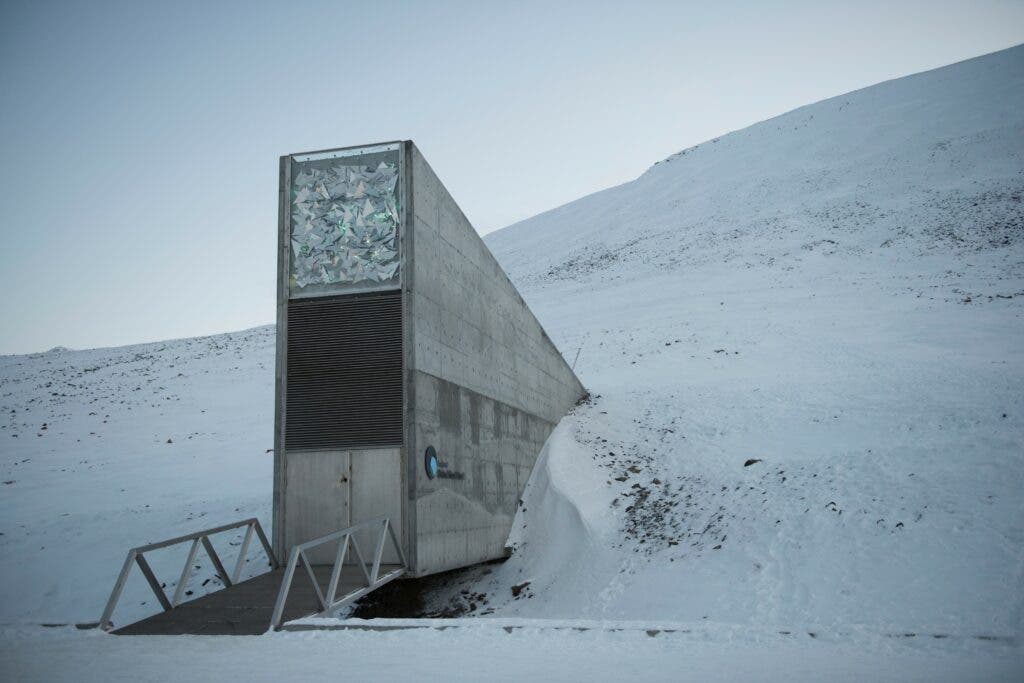If you ever want to rebuild the world from a post-apocalyptic situation, you may want to take the time to visit the Norwegian island of Spitsbergen in the Svalbard archipelago. That’s where researchers have built a facility that acts as a secure backup facility for the world’s crop diversity.
It rarely opens, but when it does, it’s a big deal. The Svalbard Global Seed Vault, a seed bank located on an Arctic mountainside, has now received new 100,000 seed deposits from 10 genebanks from around the world, including seeds of crops that weren’t previously represented. This brings the total holding of the vault to 1.1 million seed samples.

Located halfway between the North Pole and mainland Norway, the Svalbard Global Seed Vault only opens up only a few times a year to limit the exposure of the seeds to the outside world. The vault, established over 12 years ago, serves as a backup storage facility, storing duplicates of seeds samples from the world’s crop collections.
“We are always excited to receive new species into the Seed Vault,” Sandra Borch, Minister of Agriculture and Food of Norway, said in a statement. “The future of the world’s food and nutrition security depends not only on the genetic diversity we have within the major food crops—but also on the diversity of crops that small-scale farmers rely on.”
A group of 10 genebanks made the first deposit of the year in the Svalbard Global Seed Vault, including seeds of crop species that weren’t previously represented. Among these are species from the Leibniz Institute of Plant Genetics and Crop Plant Research (IPK) in Germany. IPK’s deposit includes samples of wheat from the 1920s.
The largest deposit of over 6,000 seed samples was made by the International Center for Agricultural Research in the Dry Areas (ICARDA) from its genebank in Morocco. This brings the total holding in the Seed Vault to more than 100,000 seed samples, which is close to what it was before ICARDA withdrew seeds to reestablish its own genebank collection.
“The Seed Vault underpins the global system of genebanks charged with making sure the crop diversity we need to adapt our agriculture is safe and available,” Stefan Schmitz, Crop Trust Executive Director, the organization behind the vault, said in a statement. “Should anything happen to one of these genebanks, we know the Seed Vault holds copies of these invaluable materials.
The importance of the seed vault
There are over 1,700 genebanks around the world that hold collections of food crops for safekeeping. But many are vulnerable to natural catastrophes, war, lack of funding, or poor management. This is where the seed vault comes in.
The permafrost and the thick rock where it’s located ensure that the seeds remain frozen even without power. The vault is built to be as resilient as possible, with seeds being kept at −18 °C (−0.4 °F) and at low-oxygen levels — a combination that reduces metabolic activity and delays seed aging.
The vault can store up to 4.5 million varieties of crops. Each variety contains on average 500 seeds, so a maximum of 2.5 billion seeds can be stored. At the moment there are 1.1 million seed samples, ranging from African and Asian food staples such as rice, wheat, and sorghum to South American varieties of lettuce, barley, and potato.
The seeds are stored and sealed in three-ply foil packages, which are sealed inside boxes and stored on shelves. The vault is kept at a temperature of -18ºC. This ensures low metabolic activity that keeps the seeds viable for a long period of time. The vault remained mostly closed from 2016 to 2020 due to upgrades after its entrance was flooded.
Decades of research have shown that the diversity of plants grown for food has significantly diminished since the 20th century, making the work done at the vault very important. Hundreds of organizations are working to conserve crop diversity, worried about a future with industrial monocultures that can’t cope with the climate crisis.


